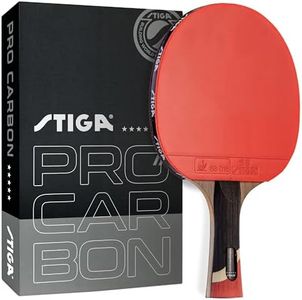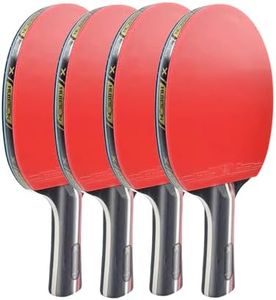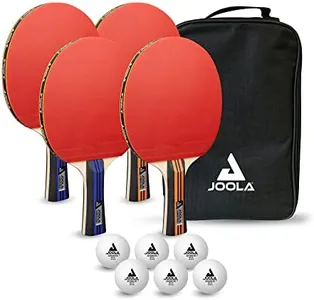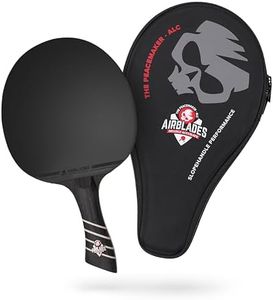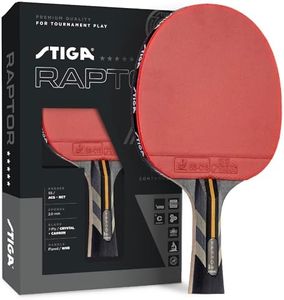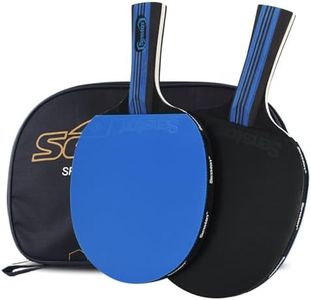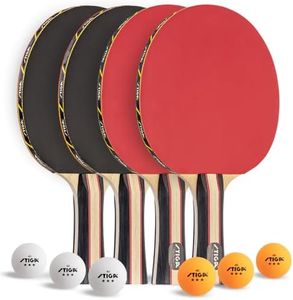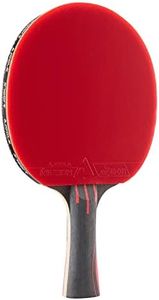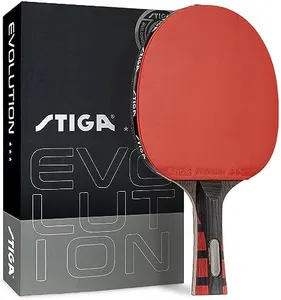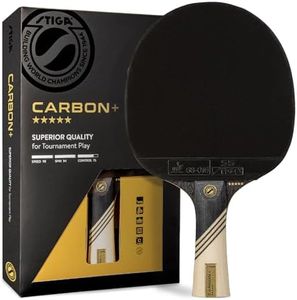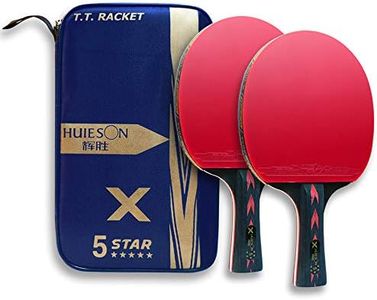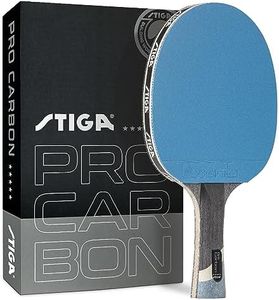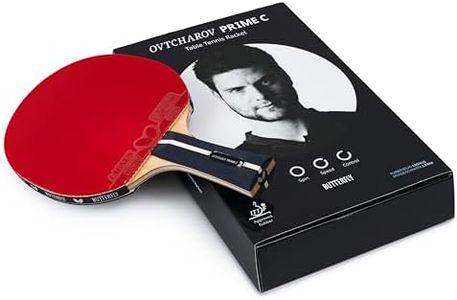We Use CookiesWe use cookies to enhance the security, performance,
functionality and for analytical and promotional activities. By continuing to browse this site you
are agreeing to our privacy policy
10 Best Ping Pong Paddles
From leading brands and best sellers available on the web.By clicking on a link to a third party's website, log data is shared with that third party.
Buying Guide for the Best Ping Pong Paddles
Choosing the right ping-pong paddle can make a big difference in how you play, whether you’re just starting out or looking to get more serious about the game. There are a few essential elements to keep in mind, each influencing how the paddle feels in your hand and how you control the ball. It’s important to think about your playing style and skill level as you consider these factors. The right paddle will help you hit shots more comfortably and enjoy your time at the table.Blade MaterialThe blade is the main body of the paddle and is usually made of wood, sometimes combined with materials like carbon fiber. This is important because it affects the speed and control of your shots. All-wood blades generally provide better control and feel, making them suitable for beginners or those who prefer accuracy. Blades that include carbon or other composite layers offer more speed and power, favored by advanced or aggressive players. If you just want to learn and have fun, a classic wooden blade might be best, but if you love powerful, fast shots, you might lean toward a paddle with carbon fiber.
Handle ShapeThe handle of a ping-pong paddle comes in various shapes, such as straight, flared, and anatomical. The shape is important because it affects how comfortably you can grip the paddle and how well you can control it. Straight handles are very simple and versatile, fitting different grip styles. Flared handles are wider at the end and are popular for their slip-resistant feel, ideal if you rely on strong forehand strokes. Anatomical handles are shaped to fit the hand better and offer added comfort. If you don’t know what feels best, try to hold a few different shapes to see which fits most naturally in your hand.
Rubber Type and ThicknessThe rubber on the paddle's surface impacts the amount of spin, speed, and control you can produce. Some rubbers are tackier, giving you more spin, while others are smoother for more control. Thickness of the rubber is also crucial; thicker rubber (around 2mm or more) is good for faster, spin-heavy play, but may be harder to control. Thinner rubber provides better control but less speed and spin. If you’re a beginner, choose a paddle with thinner, less aggressive rubber for easier handling. As you get better and want to add more spin or speed, you can switch to thicker, tackier rubber.
Sponge ThicknessBetween the blade and the rubber, there’s a sponge layer whose thickness affects the bounce and speed of your shots. A thicker sponge (2mm or more) makes the paddle bouncier and faster, ideal for offensive players who like speed and spin. A thinner sponge (below 2mm) offers more control and less bounce, which is easier for less experienced players focusing on consistency. Consider your skill level and whether you prefer control or quick, powerful shots to pick the right sponge thickness.
WeightThe overall weight of the paddle impacts how quickly you can move it and how much power you can generate. Lighter paddles (typically under 85 grams) are easier to handle and ideal for players who value speed and quick reactions. Heavier paddles (above 90 grams) can help with stronger, more powerful shots but may be tiring over long games. For most new players, a medium-weight paddle provides a good mix of comfort and performance. Choose a weight that feels balanced and comfortable in your hand for prolonged use.
